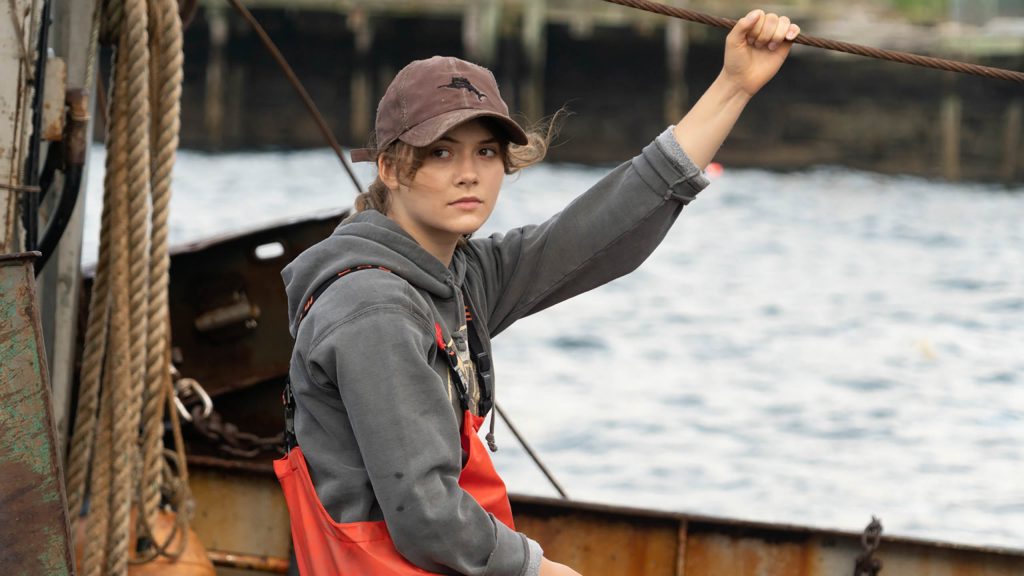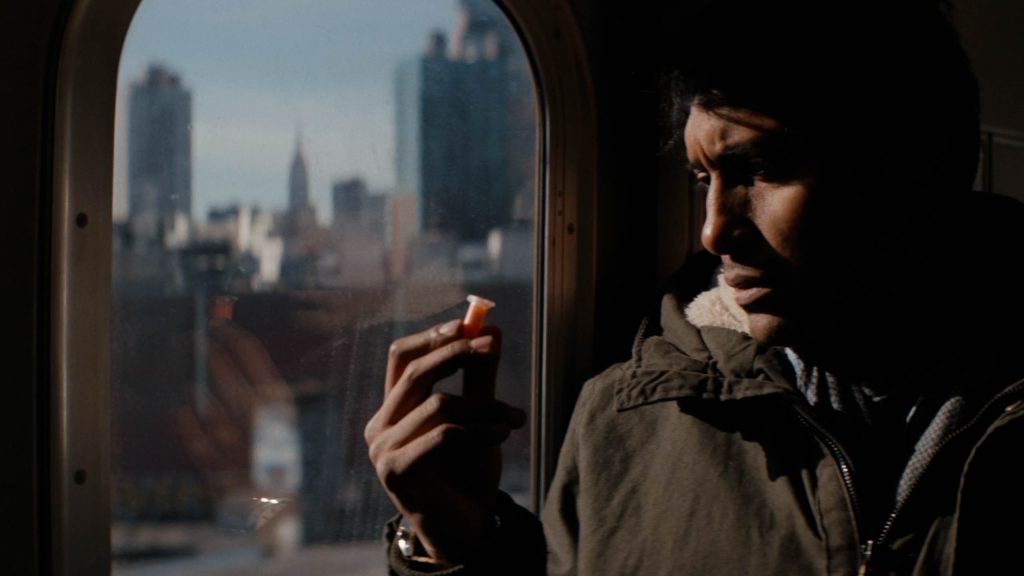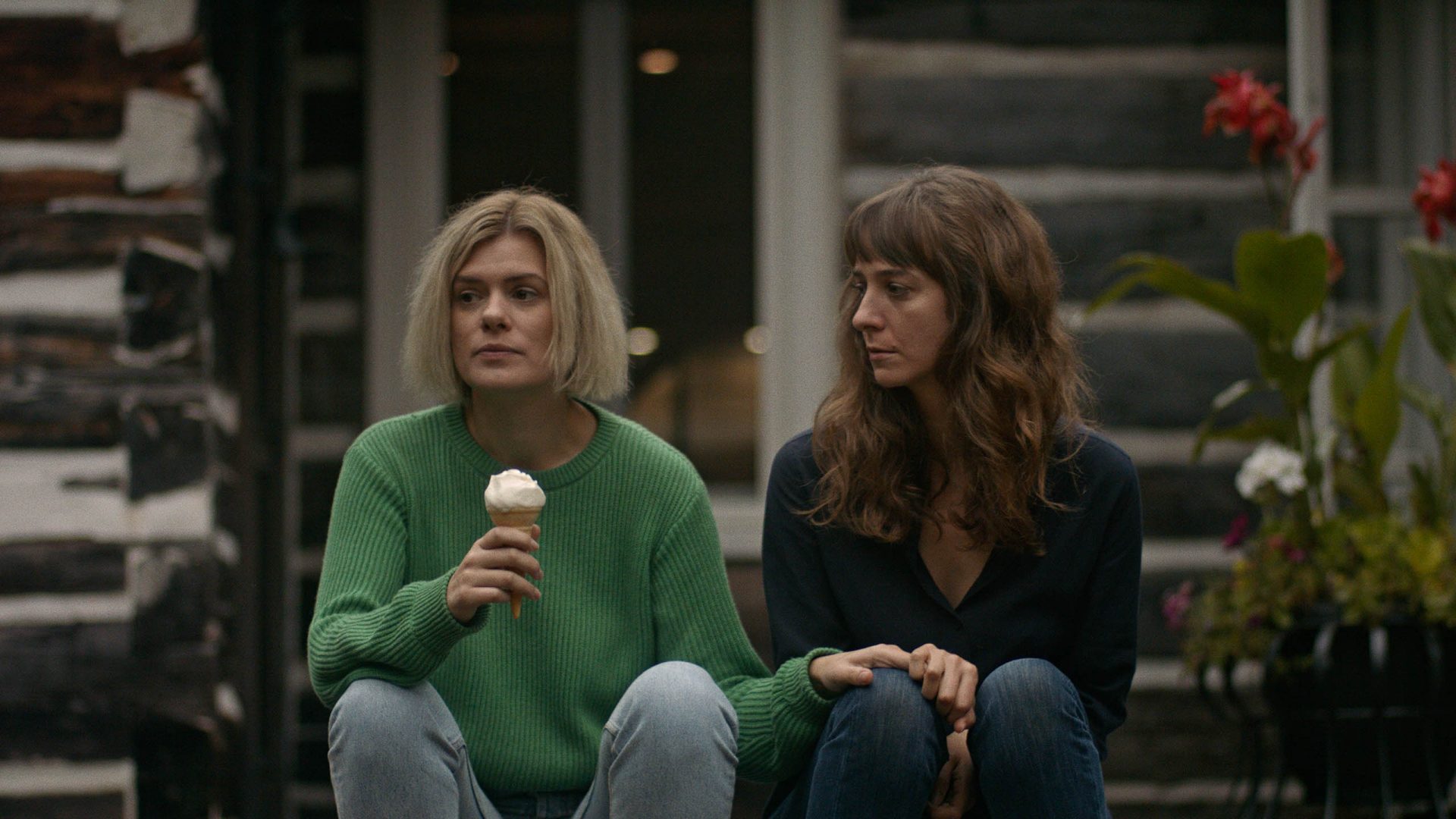By Désirée I. Guzzetta
The Sundance Film Festival is over, but the buzz continues. Not only the buzz of all the wonderful films and the press they generated, but the buzz of making new friends, talking films with fellow film-lovers in real-time, and just generally having a great time visiting other places via the magic of the movies.
Because of the ongoing coronavirus pandemic, many festival and convention organizers have had to either cancel their events or reimagine them in the virtual space. For Sundance, the organizers had the benefit of prior festivals before them as models.
The organizers had a more-than-monumental task for the event’s 2021 version, though: taking a large festival with 141 events from an in-person experience to a virtual one while still retaining the je ne c’est quoi of being there for festival-goers. They had to make sure the films were secure from online piracy, for example, all while maintaining the high standards repeat festival attendees were accustomed to.
Did everything succeed? From a first-time attendee’s perspective, it seemed like it, though I’m sure there’s always room for small improvements.
In a press conference prior to the official opening of the festival, Festival Director Tabitha Jackson, CEO of Sundance Keri Putnam, and Producing Director Gina Duncan discussed the planning that went into compacting the normally 11-day event into seven days.
For one thing, instead of several theaters in Park City, Utah, the regular host of the festival, this year’s Sundance had 20 cities that hosted safe in-person events in addition to the online aspect.
What occurred between January 28 and February 3, 2021 was a nearly seamless online experience that brought together fans from around the world to the virtual Sundance “theaters” for some hotly anticipated premieres, such as Judas and the Black Messiah and Prisoners of the Ghostland, and some as-yet-undiscovered gems hoping to get picked up for wider distribution. Most films I saw screened without buffering or pixelating, though some of the Q&As did have technical issues.
As far as audience turnout, statistics provided by the nonprofit Sundance Institute post-festival noted that audiences from all 50 states and from 120 countries were able to participate this year. Between January 28 and February 3, 2021, 73 feature films (down from a usual 120), 50 short films, four Indie Series, 23 talks and events, and the brand-new New Frontier exhibition that hosted 14 projects resulted in total audience views of over 600,000, which is 2.7 times or 168% more than in 2020. Of the 73 features, 43 were narrative and 30 documentary.
Sundance was also very diverse and inclusive. For example, 50% of each of the U.S. Documentary, U.S. Dramatic, World Documentary, and World Dramatic competition submissions were by female filmmakers. Seventy-one of the total 141 projects were by people of color; 21 were by LGBTQ+ identifying; and eight by filmmakers who identify as a Person with a Disability (PWD).
I’ll get to a list of favorites later. First, though, I want to revel in the glory that was several days of wall-to-wall movie watching that sent this film lover over the moon—from the safety of her own couch, of course.
The New Frontiers virtual space hosted a “film party” area where participants could use their avatars to walk around and talk to other guests via webcam and audio. If you were in the space at the right time, you could run into some of the filmmakers who were in attendance, or you could simply hang out with other attendees and talk about what films you’d seen, what you planned to see, and what other films you should try and see. The only downside was the limited number of people who could be in one chat bubble at a time, which became an issue as more and more of us became friendly in the text chats, and that no matter how you positioned your avatar, you couldn’t see everyone’s faces, which made the live chat harder to conduct without speaking over others or having awkward silences.
New Frontiers was also where you could screen more avant-garde content, use VR devices to connect with experimental and experiential content, or go to the “Transport” area to sit in a virtual restaurant, take pictures in a photo booth, or do karaoke and dance party activities with friends (my favorite was having my webcam video appear inside a glass of champagne). The virtual restaurant was a fun place to talk because you could see everyone’s faces at once, and several filmgoers I spoke with all wished they’d discovered it earlier.
One of my favorite parts of Sundance, outside of being in film lover’s heaven with screening after screening, were the live chats with other attendees. Approximately 15 minutes before each screening, a waiting room opened where you could chat via text with other attendees and talk about the films, sort of like hanging around the lobby. The chat window closed during the film, and then re-opened for the live Q&A, along with a separate Q&A box so the moderators could easily find the questions, as some chats moved faster than others. You were also allowed to vote on each film entered into the Audience award for a particular category, and could up-vote other people’s questions to help the moderator know what was generally something most people wanted to know. Here’s where I give a shout-out to what I dubbed the “Hot Werewolf Clan” in the Eight for Silver post-screening chat, as their persistence in getting the moderator to ask the film’s director about why his werewolves weren’t hot paid off in a funny response. Having several of my questions chosen and answered live was a quite a rush, to be honest.
It was an overwhelming experience not unlike going to San Diego Comic-Con, where there is so much to choose from and so little time to do it in. Once you give in to the realization that you cannot do it all, you make your choices, but that feeling of FOMO was pervasive, especially in the chat rooms where everyone is advocating for others to see their favorite festival films.
My years of going to SDCC helped me quell that FOMO to an extent, and I did my best to sample as much of the various virtual experiences as I could (sans the VR because alas, I do not own an Oculus), but my main focus was on the films and seeing as many of the features and shorts as I could.
I usually keep track of certain of my own stats at SDCC—hours slept, panels seen, goofy celebrity encounters logged—bur for Sundance, it was mostly confined to films seen. My final tally was 44 events: 32.5 films, 1 New Frontier video, 10 animated shorts, and 9.5 live-action shorts. I bounced around a few film parties and attended a whole bunch of Q&As as well. The halves in my tally are the one movie and one short that I was interrupted while watching and then failed to finish in the four-hour window Sundance allowed for each feature/shorts program starting from the time you began watching. I’m fortunate that one of those, Life in a Day, will be on YouTube soon so I can complete it, but the short may be harder to find.
If you followed my Twitter feed during the festival, you would have seen my quick reviews for nearly everything I saw. While fuller reviews of some are yet to come, here is a quick rundown of my favorite features, documentaries, and shorts seen over the six days of the festival:
The audience favorite: CODA
CODA sets its coming-of-age story in the world of the deaf as Ruby Rossi (Emilia Jones), a Child of Deaf Adults, navigates between the world of the hearing and her family, who are all deaf except for her. Marlee Matlin, Troy Kotsur, and Daniel Durant star as her mother, father, and brother, respectively, and all are deaf actors. Every performance is pitch perfect, and the story never strays into mere sentimentality as we see Ruby torn between helping her family’s fishing business and pursuing her love of singing. Writer/director Sian Heder firmly grounds her characters, making them all well-rounded individuals; there is very little stereotyping, if any at all. The result is uplifting and touching, and it’s no surprise that not only was it hyped by all who saw it, but also that Apple purchased the distribution rights for over $25 million. Seriously, in every chat I participated it, CODA was the first or second film to get recommended whenever anyone asked what else they should try to catch at Sundance.

The films that won’t leave my brain alone: Wild Indian and Violation
Though two very different films, both Wild Indian and Violation have not been far from my thoughts (and occasional nightmares for the latter film) since I saw them. Wild Indian features Michael Greyeyes as Makwa and Chaske Spencer-Tedo as Ted-O, cousins growing up on a reservation and experiencing generational trauma to varying degrees. A tragic act leads to Makwa leaving and when we next see him, he’s an adult in a successful job with a successful-looking life: a beautiful wife, a great house, an expensive car, and a son he mostly seems to ignore because of what he himself experienced as a child. Ted-O, a witness to the tragedy, has gone in a completely different direction, in and out of prison and has basically become a shell of a person. The film is powerful and bleak, and the ending produced a catharsis in me that left me emotionally racked.
Violation was part of the Midnight series at Sundance and had a disclaimer for extreme violence and gore. I’d seen that disclaimer applied to several films at Sundance that did not deliver either, but boy oh boy, did Violation ever need that warning. Told in a disorienting, back-and-forth timeline to better put the audience in the psychological space occupied by Miriam (played by co-director/co-writer Madeleine Sims-Fewer), Violation takes the aftermath of a rape and the subsequent revenge to a whole other level. The focus is on the all-consuming nature of revenge; when you see how methodically Miriam takes each step while her own body violently reacts to what she’s doing, you realize how horrifying the entire process is. Is revenge worth giving up your soul? You’ll have to watch to find out.
I also loved Coming Home in the Dark, another Midnight feature, which is sitting in the back of my mind, ready to jump out whenever Wild Indian and Violation give it space. You can see my conversation with three of the people responsible for its power here
My favorite drama: Son of Monarchs
Son of Monarchs takes place between Mexico and the U.S., and contains some overt political commentary, though most of it is subtext. Mendel (played as an adult by Tenoch Huerta Mejía) and Simón (played as an adult by Noé Hernández) are brothers living in Michoacán who are orphaned during a terrible flood and grow up on very different paths. Mendel, the more sensitive of the two, becomes a scientist working on butterfly genetics, while Simón stays in Mexico working for the mine that is the cause of a lot of the brothers’ sorrows, as well as those of the entire town. Director Alexis Gambis revealed in the post-film Q&A that he based some of the story on his own time coming to the United States to study science, but he transposed the setting to Mexico to show that there is diversity in the scientific world. A beautifully crafted exploration of childhood trauma and finding your own identity between two very different worlds, Son of Monarchs deserves a wide audience.

Documentaries for all: Flee and Playing With Sharks
Flee was another huge audience favorite at Sundance, and arguably the best documentary of the entire festival. Told mainly via animation (with some historical live-action footage) to protect the identity of the main subject, called Amin in the film, director Jonas Pohar Rasmussen crafts a compelling narrative as Amin speaks in detail about escaping from Afghanistan to Copenhagen, Denmark, a years-long journey that is fraught with both danger and psychological scarring. Rasmussen uses varying styles of animation to dramatize Amin’s life, and it’s all incredibly effective and stirring.
Playing With Sharks has a special place in my heart because not only does it feature ample footage of sharks, but it’s the story of one of Australia’s greatest conservationists, Valerie Taylor, who, with her husband, Ron Taylor, pushed shark science and photography to greater heights. Told in a more traditional documentary style, director Sally Aitken takes us through Valerie’s life, from her beginnings as a champion spearfisher to her change to marine conservationist and shark specialist. Valerie is a delightful storyteller, explaining how she carved out her own space in the male-dominated culture of diving in the 1950’s, and how she and Ron went on to make several important discoveries about shark behavior that helped push shark science forward. Hopefully this documentary gets distribution soon because it’s absolutely wonderful.
Shorts, shorts, and more shorts: Ghost Dogs (animated) and Excuse Me, Miss, Miss, Miss (live-action)
Out of the 50 shorts at Sundance, I was only able to see 19.5 of them, including all the award-winners. Two of my favorites were one I’d actually seen prior to Sundance, Ghost Dogs, about a rescue pet plagued by the ghosts of the dogs who lived in the house prior to him, and the surreal retail world of Excuse Me, Miss, Miss, Miss. The former is from Joe Cappa, who has worked with indie auteur Mickey Reece. The short has similarities to Reece’s off-kilter style (or perhaps Cappa brings that style to Reece’s films). The rescue pet looks like a dog, but the ghost dogs look more human and the whole thing is disturbing and funny and very enjoyable. The latter is from Filipino director Sonny Calvento and features a critique of mall culture and contractual work as Vangie (Phyllis Grande), a contractual employee at mall store Trendysita, tries to figure out how to become regularized as she is on the verge of losing her job. The answer is surprising, surreal, and hilarious.
I could go on and on about everything I saw, but this article is already too long and I want to give some of the films, including a few of the above, more space on their own. Suffice to say that I cannot wait for next year’s Sundance, one I hope to attend in person to experience the real-life madness of catching shuttles, forging my way in the snow, and all the other fun I heard about from experienced festivalgoers in the chats.







